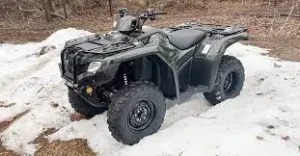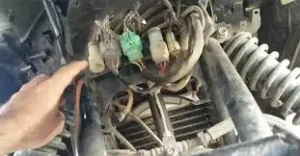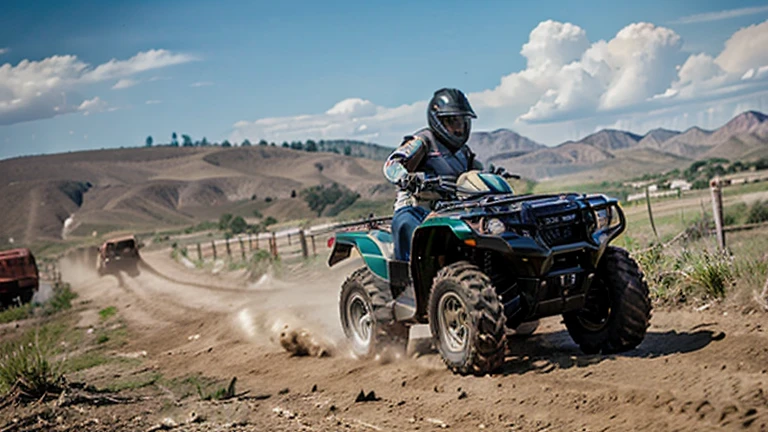A popular all-terrain vehicle (ATV) with a reputation for longevity and adaptability is the Honda Rancher 420. But it’s not infallible; problems can arise with any mechanical device. The purpose of this page is to help owners of the Honda Rancher 420 better understand and deal with the most typical difficulties that may arise with their vehicle.
The most common problems with the Honda Rancher 420 include:
1. Problems with the Transmission
Transmission problems are among the most common complaints about the Rancher 420. On rare occasions, riders have reported that the ATV slips out of gear or that shifting gears is difficult. Clutch or transmission fluid problems are common causes of this issue. You can avoid these problems by doing routine maintenance and checking the fluid levels.

Solution:
Make sure you inspect and replace the transmission fluid on a regular basis. Look for signs of wear and tear on the clutch and think about getting a professional to tune it or replace it if the problem continues.
2. Electrical Problems
There is a high frequency of electrical issues as well. These can be as simple as a dead battery or as complicated as an issue with the ignition system or a broken starter. You may reduce the likelihood of many of these problems by regularly cleaning the battery terminals and checking the electrical connection.
Solation:
Keep the battery terminals clean and inspect them for corrosion on a regular basis. Prioritize the safety of all electrical connections. difficulties, such as problems with the starter.

3. Fuel System Complications
The Rancher 420’s gasoline system isn’t always reliable. Issues with the fuel pump, carburetor, or fuel filter that are clogged fall under this category. To keep everything running well, you must clean and maintain the fuel system regularly.
Solution:
The solution is to replace the fuel filters regularly. Maintain a clean carburetor and check that the fuel pump is in good working order. Another way to avoid fuel system problems is to use clean, fresh fuel.
4.The Engine Is Overheating
Problem: Overheating due to clogged radiator, low coolant levels, or cooling system issues.
Solution:
Regularly check and top up coolant levels. Clean the radiator to prevent clogging and ensure the cooling system is functioning properly. If overheating persists, it may indicate a more serious problem requiring professional attention.
5. Tracking and Control Issues
Having issues with the ATV’s steering and suspension might impact its handling and safety. Shocks, bearings, or the steering assembly might become worn out and cause issues.
Solution:
The solution is to check the shocks and bearings often and replace them if they are worn. Keep the steering unit well-oiled and in good working order. Proper steering and handling can also be achieved with alignment inspections.
6. Brake Wear and Tear
Slowed braking or strange noises.
Solution:
The solution is to check the brake pads for wear on a regular basis and replace them as necessary. In addition, make sure the brake fluid is fresh and at the recommended amount before changing it.
| Feature | Description |
|---|---|
| Model Name | Honda Rancher 420 |
| Engine Type | Liquid-cooled, fuel-injected OHV wet-sump longitudinally mounted single-cylinder four-stroke |
| Displacement | 420cc |
| Transmission | 5-speed with reverse; available with automatic clutch and electric shift program, or a manual shift |
| Drive System | 2WD/4WD; Selectable 4WD with TraxLok® and optional differential lock |
| Front Suspension | Independent double-wishbone; varies by model |
| Rear Suspension | Swingarm with single shock; varies by model |
| Brake System | Front and rear hydraulic disc |
| Tire Size (Front/Rear) | Varies by model |
| Fuel Capacity | Approximately 3.9 gallons |
| Towing Capacity | Up to 848 lbs (385 kg) |
| Rack Capacity | Front: 88 lbs (40 kg); Rear: 176 lbs (80 kg) |
| Dimensions (LxWxH) | Varies by model |
| Seat Height | Varies by model |
| Ground Clearance | Varies by model |
| Curb Weight | Varies by model |
| Primary Use | Utility, off-road, and recreational riding |
Conclusion
Although the Honda Rancher 420 is a sturdy and dependable ATV, it can be maintained regularly and run better if you know what to look out for and avoid these typical problems. When dealing with these issues, owners should always consult the handbook and, if need, get expert assistance.

